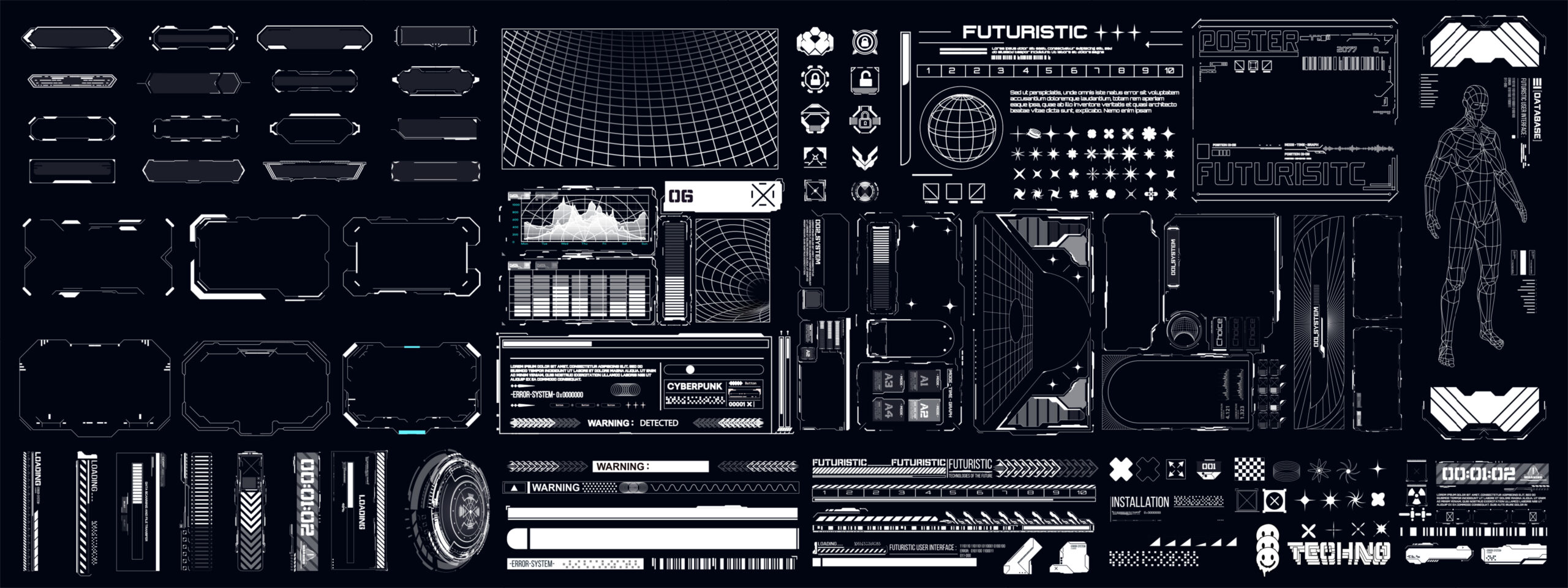
What is going on with Web these days?
What is going in with Web these days?
Website UX, Design, and Development Trends in 2025: What’s New and What Matters
The web never sits still—and neither should your website. In 2025, user expectations are sharper, technology is faster, and design trends are smarter. If your site still feels like it was built in 2020, it’s time for a refresh. Whether you’re a business owner, designer, developer, or digital marketer, keeping up with the latest in website UX, design, and development is non-negotiable.
Here’s what’s hot right now and what to focus on if you want to stay competitive.
UX in 2025: Smarter, Simpler, and More Human

AI-Personalized User Journeys
Artificial intelligence is reshaping UX. Websites in 2025 are leveraging real-time data to deliver tailored content, dynamic interfaces, and personalized product recommendations. AI-driven UX means no two users have the same experience—and that’s a good thing.
- Why it matters: Personalized UX increases engagement, time on site, and conversion rates.
- SEO note: Use keywords like “AI in UX,” “personalized user experience,” and “dynamic content delivery.”
Accessibility is Now a Standard, Not a Bonus
Web accessibility isn’t optional anymore—it’s the baseline. Sites that don’t prioritize accessible UX (keyboard navigation, screen reader support, color contrast, etc.) are not only alienating users but also risking legal issues.
- What’s new: AI-powered accessibility tools that automatically adjust content and design in real time based on user needs.
- SEO tip: “Accessible website design,” “inclusive UX,” and “WCAG 2.2 standards” are good keywords to target.
Microinteractions: Small Details, Big Impact
Hover effects, swipe animations, subtle sounds—these tiny UI details guide users, reduce friction, and make sites feel more intuitive.
- Why they work: Microinteractions give feedback and build trust, especially in mobile and app-like experiences.
Web Design Trends for 2025: Clean, Fast, and Future-Proof
Brutalist Minimalism is Back—But Refined
The raw, stripped-down brutalist style has evolved. In 2025, designers are pairing brutalist elements (bold fonts, rigid grids, grayscale palettes) with smoother animations and interactive layers.
- Why it’s trending: It cuts through the noise, looks unique, and loads lightning fast.
Dark Mode by Default
Dark mode isn’t just a toggle anymore—it’s becoming the default. Users expect it, and designs are now built with dark mode as a primary experience, not an afterthought.
- Tip: Design with contrast and legibility in mind. Don’t just invert colors.
3D and Immersive Visuals, Without Killing Performance
Thanks to WebGPU and lightweight 3D libraries, immersive design is becoming mainstream. Expect subtle 3D graphics, scroll-triggered animations, and spatial layouts—especially in portfolio and luxury brand sites.
- Best practice: Balance wow-factor visuals with speed. Lazy loading, compression, and progressive enhancement are key.
Scrollytelling and Narrative Navigation
Storytelling via scrolling is bigger than ever. As users scroll, content unfolds in a controlled, cinematic way—ideal for brand storytelling, case studies, and longform product pages.
- Why it works: It keeps users engaged longer and lets you guide their journey intentionally.
Development Trends in 2025: Speed, Flexibility, and AI Integration

Headless CMS + Jamstack Still Rules
Jamstack architecture (JavaScript, APIs, Markup) continues to dominate. Combined with headless CMS platforms like Sanity, Strapi, or Contentful, developers can build ultra-fast, secure, and scalable websites.
Why it’s winning:
- Faster performance
- Better SEO
- Easy integration with multiple channels
SEO focus: “Jamstack websites,” “headless CMS benefits,” and “fast-loading website architecture.”
AI-Assisted Development
Copilot isn’t just for code anymore. AI tools now help generate HTML/CSS, write scripts, fix bugs, and even handle basic UI logic. For developers, this means faster builds and fewer repetitive tasks.
- Tools to watch: GitHub Copilot, Cursor, and AI integrations in modern IDEs.
Caution: Human oversight is still crucial—AI isn’t always right.
WebAssembly (WASM) is Growing
WebAssembly allows near-native speed on the web. It’s becoming more mainstream in applications needing performance boosts (think complex games, data visualizations, or design tools).
- Impact: Web dev isn’t limited to JavaScript anymore. Languages like Rust, Go, and C++ are joining the frontend party.
Performance and Core Web Vitals: Still Critical in 2025
Google’s Core Web Vitals aren’t going anywhere. In fact, they’re evolving. Metrics like Largest Contentful Paint (LCP), First Input Delay (FID), and Cumulative Layout Shift (CLS) are still vital for both UX and SEO.
Key upgrades in 2025:
- Interaction to Next Paint (INP) is now a primary metric.
- Real user data (field data) is favored over lab simulations.
Quick wins:
- Compress images with AVIF format.
- Use modern frameworks like Astro or Qwik for partial hydration.
- Serve fonts locally to avoid layout shifts.
Mobile-First is Now Mobile-Only for Many
The mobile-first design approach has morphed. For many industries, especially eCommerce and content-driven sites, mobile isn’t just first—it’s the only platform most users care about.
- Trend shift: Designers are building with mobile-native gestures (swipe, long press, drag) and skipping desktop-heavy features altogether.
Pro tip: Test on real devices—not just emulators—and prioritize performance over fancy effects.
Voice and Visual Search: Designing for Discovery
Voice assistants and camera-based search (like Google Lens) are changing how users find and interact with content.
Implications for UX:
- Design pages that answer spoken questions.
- Use structured data (schema markup) for rich results.
- Add alt text and image metadata for visual search indexing.
SEO goldmine: Optimize for “how-to” phrases, product specs, and local queries.
Privacy-First Design: Trust is a Feature
With increasing data regulations (GDPR, CCPA, and now DPDI in the UK), users are more privacy-aware than ever. Transparent, ethical data collection is now part of good UX.
Features gaining traction:
- Just-in-time permissions (only ask when needed)
- User-controlled personalization
- No-cookie tracking alternatives (like server-side analytics or privacy-first tools like Plausible)
SEO tie-in: Sites that load faster, respect privacy, and reduce bloat often rank better.
No-Code and Low-Code Are Going Pro
No-code and low-code platforms aren’t just for beginners anymore. Tools like Webflow, Framer, and Bubble are enabling pro-level builds with less code, faster turnarounds, and easier collaboration.
Key benefits:
- Rapid prototyping
- Visual version control
- Easier handoff between design and dev
Ideal use cases: Landing pages, MVPs, microsites, and marketing sites.
Sustainability in Web Design: Greener UX
Eco-conscious web design is more than a trend—it’s becoming a business value. Lighter websites use less energy, which reduces carbon emissions. In 2025, brands are paying attention.
Tactics for greener sites:
- Optimize media and code.
- Use green hosting providers.
- Build with dark mode and lower power consumption in mind.
SEO insight: Google has hinted that sustainable performance could eventually influence rankings.
Future-Proofing Your Website: What to Focus on Now
Actionable checklist for 2025:
- Use a headless CMS + Jamstack or hybrid architecture
- Make accessibility part of the design and dev workflow
- Prioritize mobile UX and Core Web Vitals
- Integrate AI for personalization and dev efficiency
- Keep designs clean, focused, and content-driven
- Build with privacy, speed, and sustainability in mind
Web UX, design, and development in 2025 isn’t about chasing trends—it’s about adapting to user behavior, tech evolution, and business needs. Sites that succeed this year will be fast, personalized, accessible, and trustworthy. They’ll be built with real people in mind, not just bots or buzzwords.
And at We Are Volume we believe the decisions made in the web today will need to support where the web is going three to five years from now, which is the typical lifespan of a redesign.
If your website isn’t hitting these marks, now’s the time to act. Users won’t wait. Neither will your competition.
